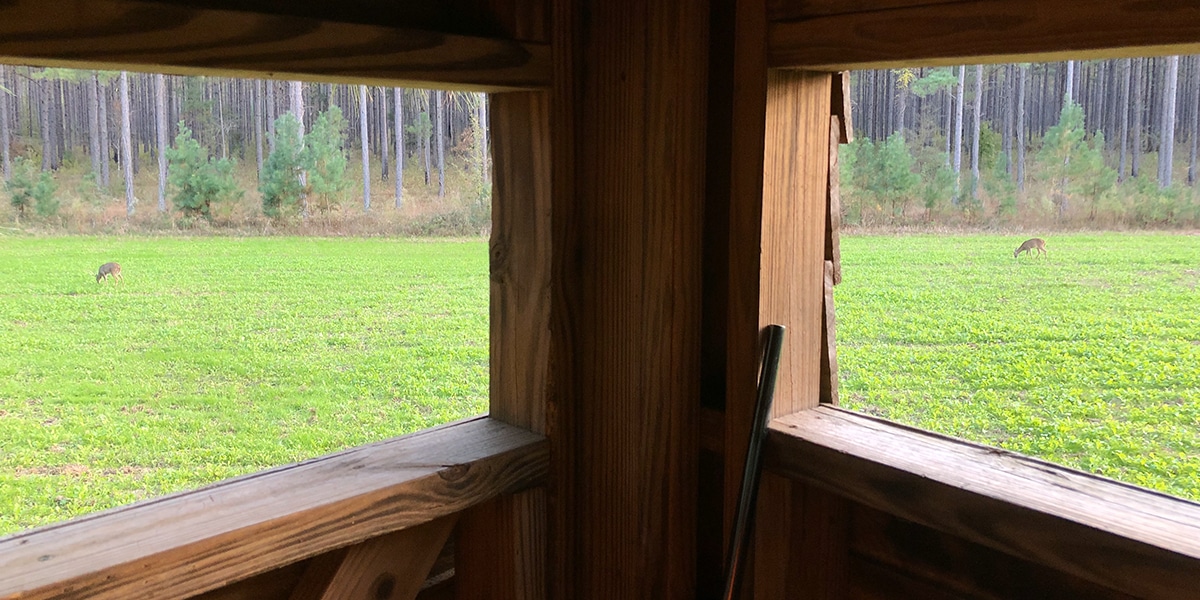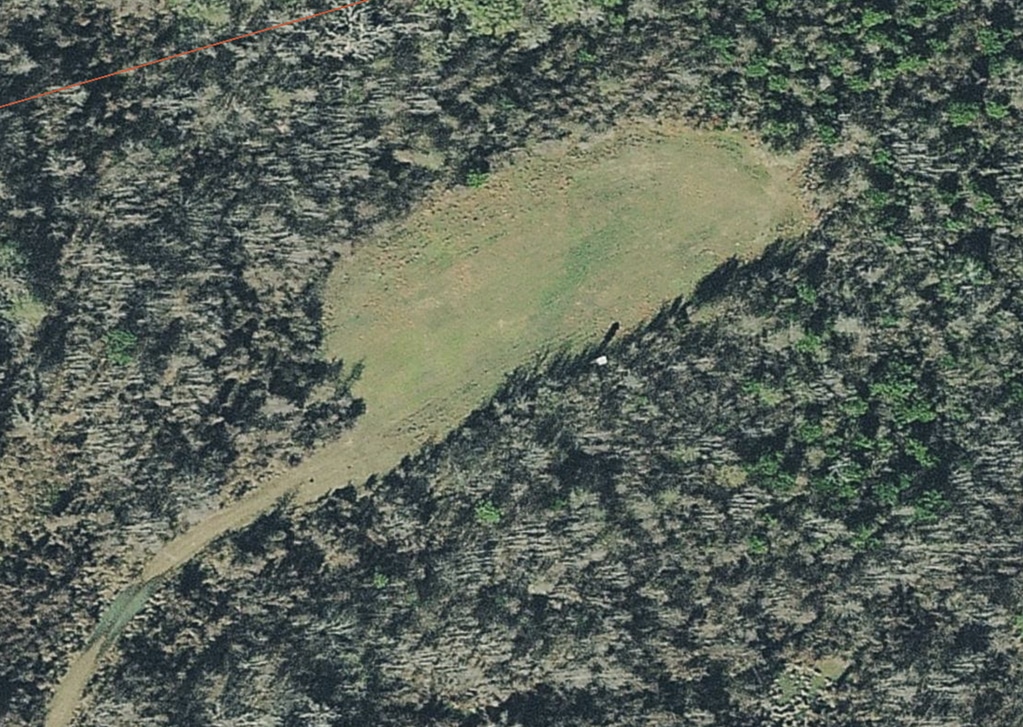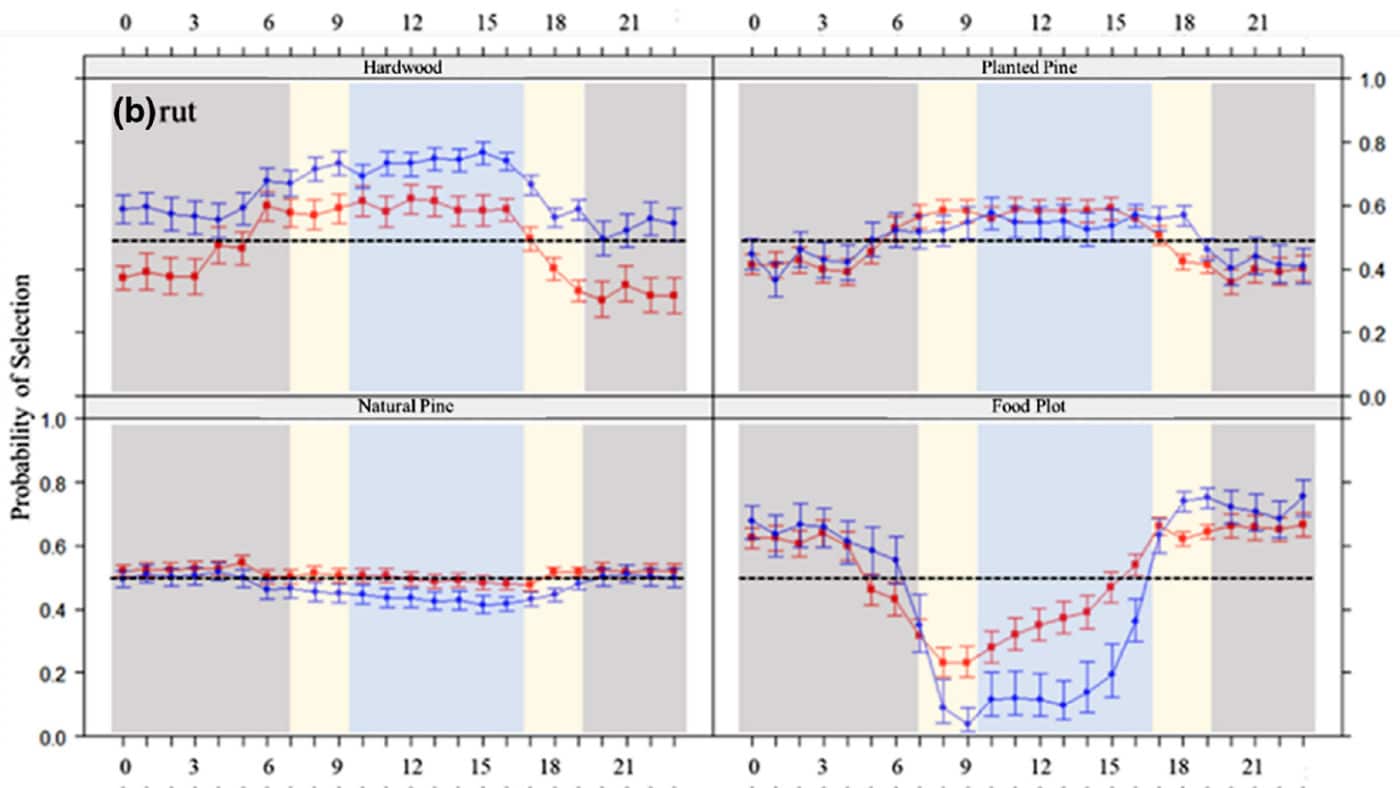
You worked hard to prepare that fall food plot, from filling the first soil-sample baggie to the final roll of the cultipacker, leaking drops of sweat onto the Earth the whole way. Now a green carpet of cereal grains, brassicas, clover or other forage is glowing in the autumn light, and it’s time to take the final step to inaugurate this deer hot-spot: Stay the hell away from it.
This month, Auburn University’s Deer Lab published a new scientific study of deer movements in the journal Ecology and Evolution. You’re already somewhat familiar with this study, because Dylan Stewart and Will Gulsby gave us a preliminary look at their findings in the 2021 article, To Intercept Bucks in Daylight, Take Lessons From GPS-Collar Research. But reading their published scientific paper, I picked up a few more take-aways that drive home the lesson: Even lightly hunted food plots are relatively poor producers of daylight buck sightings.
We Hunt Food Plots Too Hard
I’ve been guilty, and I will continue to be. There’s just a powerful pull that draws all of us to that comfortable, convenient stand overlooking a delicious-looking green patch. So, we hunt food plots too much. We hunt them at the wrong times, in bad winds, from stands that are too close and in places that force us to walk through the plot to get to them.

Just open your onX Hunt app and glide over any region of rural land in whitetail country. You’ll see woodlands dotted with small to large patches carved out for food plots, and if you zoom in you have a very good chance of seeing a structure of some kind as well, like the geometrical roof of a shack or blind, or the shadows of watchtower legs stretching into the field. Maybe even an ATV trail leading to the edge of the field, a hint about the location of a ladder stand. I’ll wager very few deer hunters would think of creating a food plot and not placing a stand there.
Yes, we still kill deer in those plots. But could we see more, or see adult bucks, if we changed our food-plot hunting strategy?
Deer Movements and Food Plots
Auburn University’s research at Brosnan Forest in South Carolina has been going on for years and produced a lot of great deer science. They’ve been able to track a ton of GPS-collared adult bucks and does over many years on a 6,500-acre, hunted private property where hunting activity is documented. They learned, for example, the time it takes for buck movement around a stand to return to normal after that stand is hunted. The new paper, which also included contributions from Dr. Bret Collier at Louisiana State, focuses on buck and doe movement rates and use of various cover types in a hunted landscape.
Auburn mapped deer stands at the micro-level, calculating the types of cover surrounding deer stands, the total area in which a deer could be seen from those stands, and how deer moved in relation to those sites and cover types. This figure jumped out at me immediately: Food plots are only 6% of the landscape at the study site but 23% of the total area in which deer can be viewed from stands. In other words, hunters are dialed in on food plots and hunting them more than any other cover type, leaving large areas of cover lightly pressured or not hunted.
This graph from the newly published paper caught my eye.

This shows the average probability of a buck or doe selecting a certain cover type across a 24-hour period. Planted pine and hardwood drains, both dense and suitable for bedding cover, are more highly selected during dawn, dusk and daylight than at night – bucks especially select hardwood drains in daylight more than does. Food plots are the opposite, and strongly so: Both sexes are more likely to choose food plots over all other cover types at night and then strongly select away from food plots throughout most legal hunting hours.
This particular chart shows behavior during the rut, but the pre-rut and post-rut versions aren’t a whole lot different.
Does vs. Bucks, Dawn vs. Dusk
A couple of things I noticed here. First, does (the red lines) were more likely to use food plots during most daylight hours than bucks were. Likewise, does were slightly less likely than bucks to hole up in dense planted pines or hardwood drains while the sun was up. This is interesting because the researchers report does are harvested at twice the rate of bucks on this property. Something is going on here other than just risk and hunting pressure.
Bucks and does selected strongly against food plots at “dawn,” defined as a 2½-hour period beginning 30 minutes before sunrise. However, dusk was different.
The authors explained this in physiological differences between bucks and does that cause does to have a greater demand for nutrition. Bucks are better able to skip breakfast, especially in fall when sex is priority. This is one reason why adult bucks lose weight during the rut.
Notice also the difference in dawn and dusk food plot activity. Both bucks and does selected strongly against food plots at “dawn,” defined as a 2½-hour period beginning 30 minutes before sunrise. However, dusk – the 2½-hour period ending 30 minutes after sunset – was different. In the pre-rut, rut and post-rut, bucks and does began selecting food plots, tending to move out of cover in hardwoods and pine thickets into food plots during legal hunting hours.
It’s as if deer, having fed in food plots throughout the night, don’t need to run risks at dawn. But having hidden (and moved at relatively lower rates) in thick cover all day, hunger drives them into open food plots before the cover of dark has returned.
One thing to keep in mind on this study site: Hunting pressure is relatively low. The researchers quantified it as 5 hours of stand time per 250 acres per week. That’s difficult to conceptualize, but it seems light to me. Property managers actively rotated hunters across stands to spread pressure, and it was estimated that only one in 10 stands was occupied on any day. Despite this, deer still displayed clear avoidance of food plots throughout most legal hunting hours, as seen in the study charts.
The Take-Aways
It’s not that you have zero chance of seeing deer in daylight, or even adult bucks, if you stand guard over a food plot. If that were true, nobody would hunt food plots. The point is, deer-tracking research is showing hunted food plots (and hunted bait sites also) may be the least productive option you have for catching bucks in daylight.
Dylan and Will offered their advice in last year’s article, and it relates to catching bucks coming and going from thick cover on approach to food plots, not in the plots or in the bed, but in the staging areas between.
I think their fully published study offers some additional tips.
Hunt more “Natural Pine,” or its equivalent. This is a familiar cover type in the South: mature pines, thinned to a low density, and maintained with rotational prescribed fire. It features decent cover and quality forage at the same time. Being relatively open and sunny, these areas are much like natural food plots. Deer did not select strongly for or against these areas in any 24-hour period, which tells me they are better areas than food plots for seeing deer in daylight hours. Yet, they are not heavily selected by hunters. This isn’t a southern thing. Similar cover types exist where you hunt, or they can be created, so give them consideration for stand locations.
Hunt food plots in the evening. This data shows deer started evacuating food plots before shooting light arrived but began working their way back into them while the sun was still in the sky. One way to minimize pressure on plots would be to skip them in the mornings.
Use food plots for doe harvest. The Auburn study suggests that though they are not a favorite daylight destination for deer, food plots are much better places to encounter does than bucks. Consider establishing two types of stands: one type in areas where you will be trying to hunt any buck or a specific buck. Leave food plot stands as part of a second group, where you go to meet your doe-harvest goals.
Hunt food plots rarely overall. I know you’re gonna do it, and so am I. But I think we should both try to keep food plots quiet most of the time during hunting season. This could tend to increase their effectiveness on our infrequent visits, provided the crop is productive and attractive, acorns and other foods aren’t competing, the wind is right, and we’re smart about how we access the area and where the stand is located.
Save food plots for the post-rut. Auburn’s data showed bucks and does were more likely to select food plots at dusk in the post-rut than any other phase of the season. Set aside some or all food plots for the late-season, especially brassicas that are winter-hardy and will be attractive late in the year. This allows deer to become accustomed to feeding safely in such plots while other areas are pressured, giving you the element of surprise later. Equally important, we know bucks turn their attention back to groceries as the rut fades, so you’re more likely to encounter them in a food plot in the post-rut.

Every one of these tips brings to mind a cementum-aged 6½-year-old Georgia buck I killed in 2018 (seen above). Late in that season after the rut, I needed a doe for the freezer, but established stands on heavily hunted food plots were – not surprisingly – unproductive. I took a climber to a small food plot without a permanent stand, so it had not been hunted at all that year, and walked in downwind through the surrounding “Natural Pine-like” cover. The buck stepped out of this cover, on the upwind side of the plot, about 15 minutes before dark.
Afternoon hunt? ✅
Unhunted or rarely hunted food plot? ✅
Post-rut food source for bucks? ✅
Actually just hunting for a doe? ✅
“Natural pine” adjacent? ✅
Evaluate your approach to hunting food plots, and check the box next to “updated” before a new season starts.















































